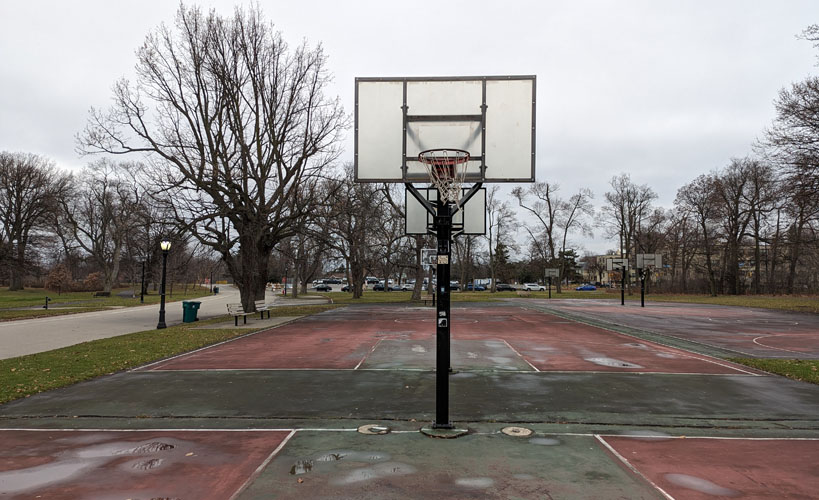
The Meeting Place for Basketball Players in Buffalo
This essay is another promotional essay for my book project entitled, The Engineers: A Western New York Basketball Story, for which there are two parts. I created a page for the book and for the numerous promotional pieces I created surrounding it. I interviewed 43 players and coaches from Section VI and Europe for this project. My research revealed several interesting facts. The 1990-91 Hutch-Tech Boys’ Basketball Team is one of the major bases for my story. The team went on a magical run winning our city league championship, the Yale Cup with a 13-0 record my freshman year. They then won the Section VI Class B sectional, coming within one game of berth in the State Final Four in Glens Falls where the elite teams gathered every year. It was a big deal from my vantage point at that time, and I dreamt of doing what they did.
My story follows my up and down four-year basketball journey at Hutch-Tech High School. It further chronicles the seasons of other players and teams in my area. It discusses where players learned to play the game around the city of Buffalo at times. Delaware Park was a basketball hub that most players in Buffalo had in common in terms of playing the game.
Basketball players who seriously played the game in Buffalo will mention Delaware Park if you talk to them. I didn’t play in Delaware Park in its glory days though I mention the once great basketball battle ground in my story and played a little bit there. Some of the players I interviewed for The Engineers did, however. I reflect on Delaware Park and its legendary basketball battles in this promotional essay.
My First Basketball Experiences at Delaware Park
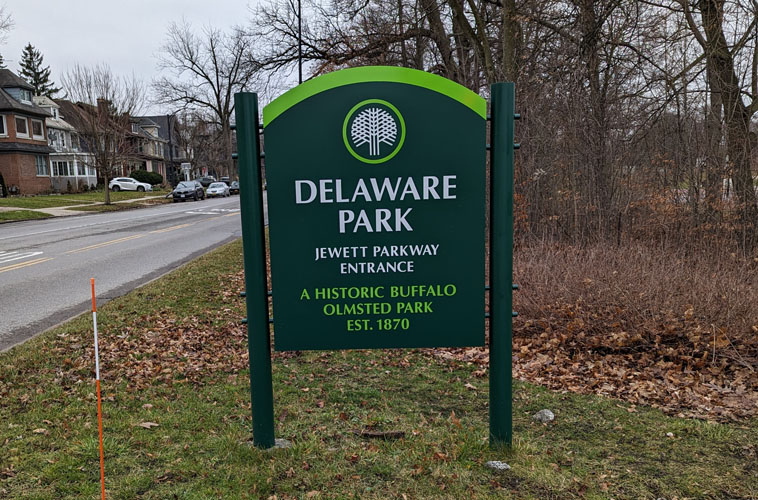
I did not become familiar with the sacred basketball courts of Delaware Park the way the great basketball players who emerged from Buffalo did. It was, for the most part, out of necessity. There was a stretch just before middle school when my pediatrician shared that I would become obese if my eating wasn’t controlled. I further needed to increase my exercise. My mother subsequently made me go to Delaware Park with her on Saturday mornings to get some exercise. I took my basketball to the courts, which were typically empty in the early morning hours while she ran around the park.
“DO IT AGAIN!” An older black man shouted out to me from the road one cold and wet Western New York Saturday morning. He wore a sweat suit and glasses. He saw me make a basket. I took a couple of dribbles towards the key and then launched up a two-handed shot which banked off the metal backboard and into the netless basket. The ball went through the basket by pure luck.
I didn’t understand fundamentally how to shoot the ball with consistently. I took the man’s challenge though and tried doing it again the exact same way. The ball came close to going in for me but rimmed out. It hit the backboard and rim and ricocheted off the basket. I looked back at the man who smiled and kept walking. This is my first memory of those sacred basketball courts. My basketball journey started formally (or informally) shortly afterwards at the nearby Campus West/College Learning Laboratory as a player-manager. You can read my essay about that at this link entitled, A Player-Manager.
In the Heart of the City
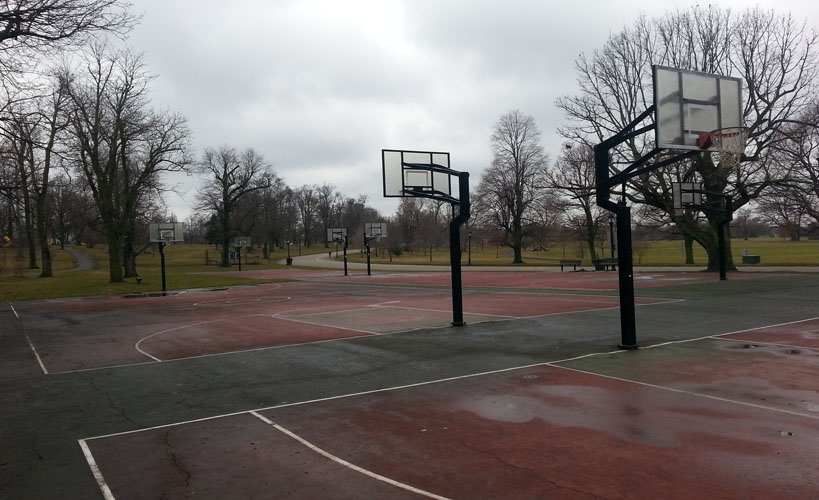
Delaware Park is literally in the heart of the city of Buffalo for those of you who don’t know. I don’t know the exact dimensions of our city. The park is smack dab in the center of it though, touching all sides—north, south, east and west. You can see if you look at a map. It is surrounded by the 198 Scajaquada Expressway which takes you to the Niagara River on the west side in one direction. The expressway takes you to downtown Buffalo and to the airport in the opposite direction. The park is boxed in by Parkside Avenue, West Amherst Street and Delaware Avenue, in terms of the main thoroughfares. It was not until learning about the 50 states in the Union that I knew that Delaware was actually a state.
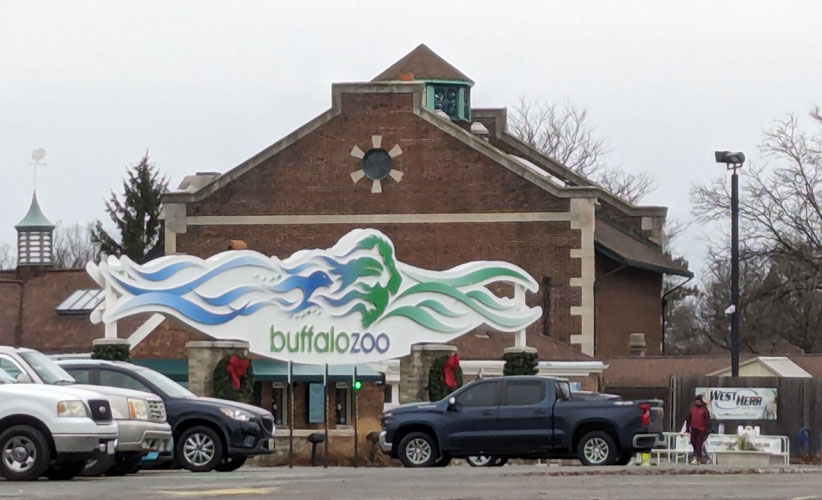
The beautiful and hilly park consists of a two-lane track forming a circle around baseball diamonds, a golf course and lots of greenery. The arboreal foliage makes it a thing of beauty for runners, walkers, bike riders and rollerbladers alike, especially in the pleasant weather months. Go at any time and you will see people out and about of all ethnicities and age groups. You see The Buffalo Zoo and actual real-life Buffalo minding their business as visitors, inside and outside of the zoo, stop and peer at them in amazement near the East Amherst entrance.
Delaware Park was one of our many natural escapes during the COVID-19 Pandemic. Walking through the park near the 198 Expressway on my visits home, I smelled a combination of outdoor aromas. They were distinctly those of Western New York and reminded me of years past.
Sacred Basketball Battlegrounds
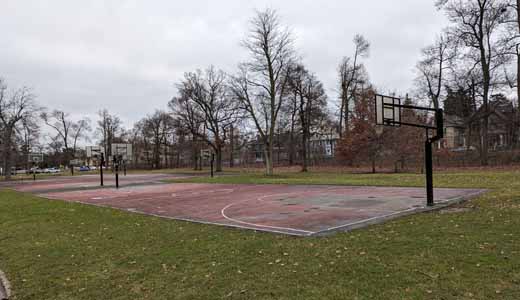
The basketball courts lay on the eastern side of the park on Parkside Avenue. There are six to eight of them each with two baskets. They are nestled into a forest-like patch of trees as the road of the park ascends upwards towards the 198 Expressway. Think about a combination of nature, pavement, and steel when you think about Delaware Park. The steel was perhaps created in the now closed, but one-time famous, steel plants south of downtown Buffalo.
The pavement on Delaware Park’s basketball courts was and is to this day a mixture of red and green. The outside of the courts and the free throw keys are green and the courts themselves are all red. Many parts of the courts are cracked and warped due to the four seasons of the region. Water pools in certain areas as described when it rains.
The backboards are made from a glass-like material with ‘breakaway’ rims today. The backboards were made of steel with holes in them with standard rims in the late 1980s and early 1990s. The ball made a distinct crashing noise when it hit those backboards. I think the city put nets up in the late spring-early summer. They’d get torn up to the point where there weren’t any eventually. They hung from the rims by a single thread by the time the fall months arrived. I think the nets being ripped and torn by the end of the summer was indicative of the number of games being played there daily.
Legendary Basketball Battles
“There were battles at Delaware Park. If you lost, you might as well go home because you may not get back on the court – that’s how Delaware used to be,” said Edmond Harris, a star player at Riverside High School in the 1990s. I remember playing against him on one of my trips to the park between my sophomore and junior years. A call was made by someone which he didn’t like. Ed didn’t give the ball back to us to let us resume play until it was overturned. He was ultra competitive.
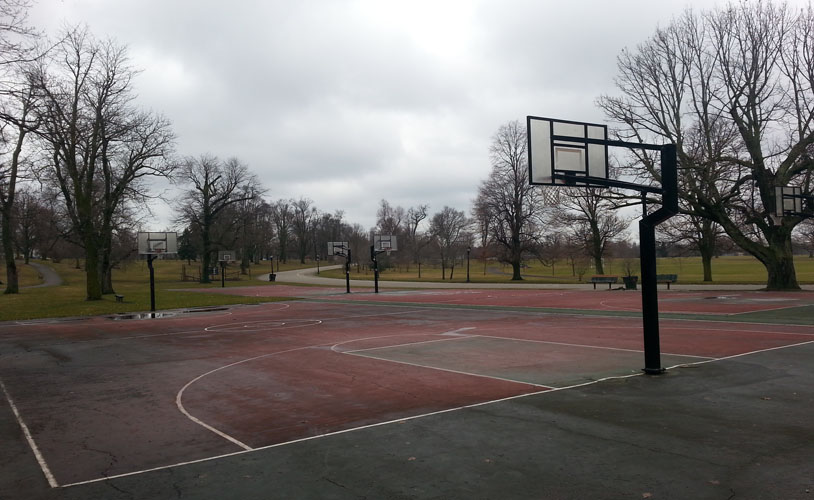
I knew who Ed was when he showed up to the park because the Riverside Frontiersman won the Yale Cup with a record of 11-2 in my sophomore year on the Hutch-Tech Boys’ Basketball Team. Their Yale Cup league-clinching victory was a heartbreaking loss for us. They won the Class C sectional that year. Curtis Brooks was one of the key players on the 1990-91 Hutch-Tech Boys’ Basketball Team described above. He said the same thing about the games at Delaware Park. You did not get back on the court if you lost.
I didn’t know those Delaware Park basketball courts were battle grounds for basketball going into middle school. Players from all the surrounding neighborhoods (and the suburbs) gathered there and played for hours and hours. They built their reputations and sharpened their skills. You would not get back on the courts any time soon once again, as legions of players and teams lined up for the next game.
Older and Younger Players
“I like playing with the older men at Delaware Park,” said one of my teammates at Hutch-Tech. It was Earl Holmes of the Class of 1995. He enjoyed physical play which he probably learned there often stating, “If you’re not fouling anybody, then you are not playing any defense!” I played more at the parks in my neighborhood and at the William-Emslie YMCA with kids my own age. I was more comfortable with that, though I should have pushed myself into the other basketball circles and more at Delaware Park.
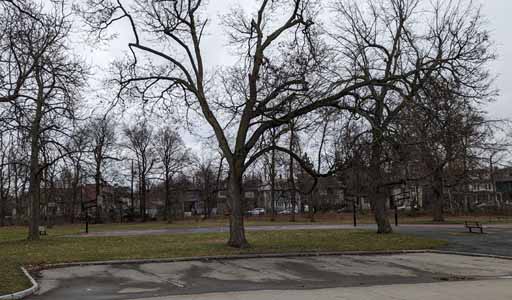
Players played there day after day, sharpening their skills and learning to compete. The basketball played there was very physical as there were many grown men competing there. They used all kinds of tricks that you might not learn in an organized basketball program like ours at Hutch-Tech, or at a teaching camp like the Ken Jones Basketball Camp. I did not understand that the younger boys who consistently played with the men improved their games simply by acclimating themselves to the contact, physicality, and speed of those games. For those who played organized basketball, the time they spent playing at venues like Delaware Park gave them an advantage in the winter months indoors in the organized high school games.
Where Legends Played
“In terms of Laettner, I got to see him at Delaware Park. So you see this big white boy playing with us. He pushed the point and did everything. I was like, ‘Wow! Who is this guy? Oh, that’s Christian Laettner and he plays for Nichols.’” Keith Hearon was one of my teammates from Hutch-Tech High School. He reflected on seeing the future Duke University star before he became a star at the Delaware Park basketball courts. Laettner was from the Town of Angola just south of the City of Buffalo for those unaware. He attended the Nichols School near Delaware Park. He played at multiple venues in the city and sharpened his game before going off to Durham, NC.
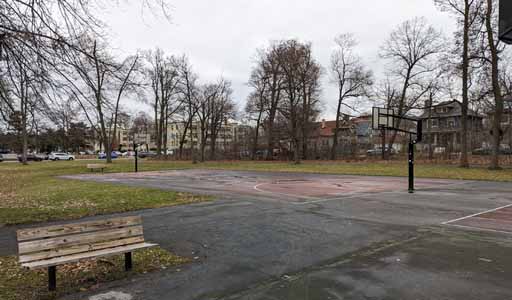
“There was talk about Cliff Robinson. My stepmom was friends with him, and I still remember him pulling up in his black sports car, cheesing ear to ear. We went to Delaware Park and played a couple of games there. I couldn’t believe that I was playing with the caliber of a player like Cliff Robinson, a legend in Buffalo.” Ryan Cochrane was a star point guard at Cardinal O’ Hara High School. He reflected on getting to play with Cliff Robinson at Delaware Park. The late Cliff Robinson played basketball at Riverside High School in the 1980s before helping to put the men’s basketball program at the University of Connecticut on the map. He was drafted into the NBA in 1989 where he played 18 seasons with multiple teams.
Another important aspect of Delaware Park was that the stars would sometimes show up and play there. Note that I’m referring to the era after the Buffalo Braves moved to Los Angeles to become the Clippers. Buffalo had a more vibrant basketball scene overall at that time than the one I experienced in the late 1980s and early 1990s. If you hung out at those Delaware Park basketball courts enough, or you knew to do so, chances are you would see players like Christian Laettner, Cliff Robinson, Trevor Ruffin and others. It was the basketball Mecca in the city and a proving ground. You were likewise much better off if you played there regularly than the players who didn’t.
It Wasn’t the Rucker but Competition was Fierce
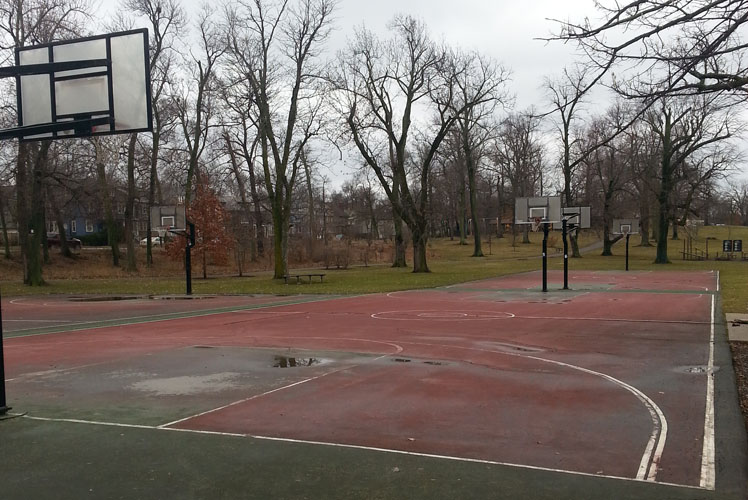
“It wasn’t the Rucker, but there was competition down there. If you didn’t have any confidence in your game, you really didn’t get out there and play. As a matter of fact, I didn’t play down there much, until the reputation was gone.” My Uncle Tony shared his Delaware Park experiences with me when I interviewed him. I discussed how my uncle played at Burgard High School in the 1960s in my Yale Cup piece. He and his peers knew a different version of Buffalo basketball than me and my peers did.
“Back in the day? No. You didn’t get out there unless you could hoop. It watered down the competition for a while when they built all those other courts and remodeled the park,” Uncle Tony continued. “Yes, there was just one court down there at first. But I’ll also never forget when the professionals came down there!”
Buffalo’s Other Basketball Battlegrounds
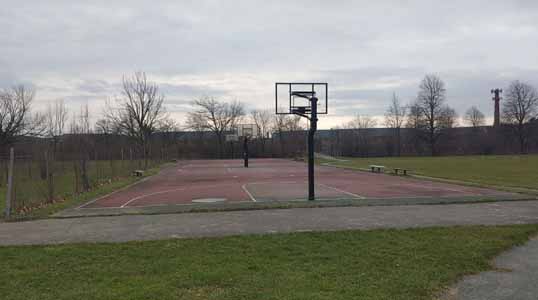
“Delaware Park, the Perry Projects and the Langfield Projects. The Lanigan Field House. The Perry Projects have been there for years, but the Lanigan Field House, it was indoors, so we played there in the wintertime,” Uncle Tony said. “Also, when the John F. Kennedy Center was first built on Clinton, that was a great indoor place for ball players. It was new when I was coming up, but not when you were coming up.”
I thought of writing this promotional essay on Delaware Park somewhat at the last minute. Those sacred basketball courts on Parkside Avenue deserved an essay dedicated to them. I would’ve played there more if I could go back and do it all over again. The great basketball players traveled all around their cities (and to other cities) to find the best competition and observe other players in most metropolitan eras.
The Masten Boys’ Club

“There’s nothing like that now, that Boys Club over there (the Masten Boys Club). There was someone over there who I think had a key. They could keep that gym open for invited players until midnight if they wanted to. It collected all the best players and they would be there playing pickup games,” said former Riverside High School Head Coach Bill Russell.
We discussed how places like the Masten Boys Club were training grounds for basketball phenoms like Buffalo Traditional’s Jason Rowe and Damien Foster. The people in those basketball circles knew about them before they got to Buffalo Traditional. They burst on the scene surprising everyone else, myself included. “There are no more places like that. That doesn’t exist anymore.”
Other Training Grounds
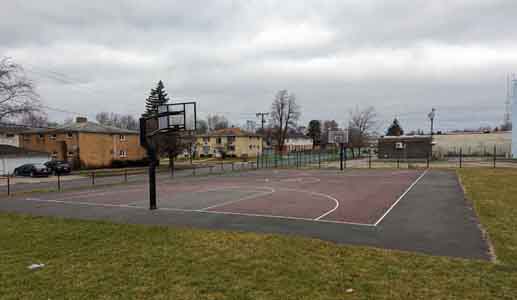
There were other pockets and crevices in Buffalo where the great players trained. Jason Rowe and Damien Foster shared that they spent a lot of time sharpening their skills at the Masten Boys Club in my interviews with them. They played with a lineup of elite older players there who were willing to pass on what they knew to the young upstarts. There were other training guards though.
Ryan Cochrane embarked on a magical championship basketball run at Cardinal O’ Hara High School in 1994. I shared that he learned a lot about playing the game from Coach Dean in the Central Park neighborhood. There were also church leagues, community centers, and other parks around the city of Buffalo. The players in nearby Niagara Falls trained at their local community centers, YMCAs, Boys and Girls Clubs in the “Biddie Leagues”. The suburban kids played in their locales as well. Most, at some point though, made their way to those sacred basketball courts at Delaware Park.
Street Basketball Dominated at Delaware Park

There are two types of basketball, organized and street. Combining the two styles is a cheat code that isn’t obvious to many young players starting out. I did not understand this in my early years. Coach Ken Jones taught us the organized style of basketball at Hutch-Tech High School and didn’t emphasize the street style. He was a fundamentals coach. His 1990-91 team had players on it that understood both styles which is in part what made that team so successful.
Street basketball was the style played at Delaware Park which is another thing that made the games there so valuable. The basketball also falls under the term ‘survival’ basketball, a principal introduced to me by Coach Ronald Wolfs from the Netherlands. He received early fundamental lessons about basketball from Coach Jones as well before discovering the different styles. Watch our two-part interview at this link if you want to learn more about his experiences and what basketball is like in Europe.
Closing Thoughts

Thank you for reading this piece. I took the pictures in this essay myself. I took them in the Buffalo winter months. No, the Delaware Park basketball courts are not cold and wet during the summer months, nor are the skies continuously cloud covered and gray. These pictures captured the essence of playing there though in addition to the essence of the city of Buffalo. That essence is tough, gritty, and weathered.
I will create more promotional/teaser pieces for The Engineers: A Western New York Basketball Story, via print and video, as I journey through the final steps of the book’s completion. I created a page here on Big Words Authors for the purpose of giving a background of the book and grouping all the promotional pieces such as this in one place for interested readers.
There are interviews on my first blogging platform of some of the most accomplished Section VI players from my era. They include Jason Rowe, Tim Winn, Carlos Bradberry and Damien Foster. I also interviewed legendary LaSalle Head Basketball Coach, Pat Monti. Other basketball-related essays related to my book project are there as well. If you liked this piece, please share it on your social media and leave a comment below.
The Big Words LLC Newsletter
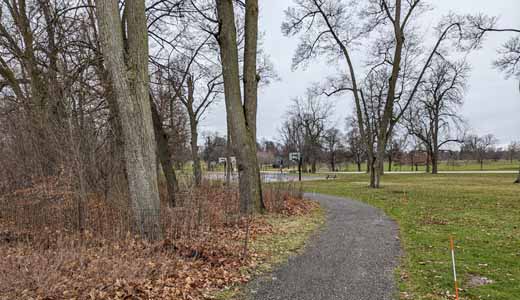
For the next phase of my writing journey, I’m starting a monthly newsletter for my writing and video content creation company, the Big Words LLC. In it, I plan to share inspirational words, pieces from this blog and my first blog, and select videos from my four YouTube channels. Finally, I will share updates for my book project The Engineers: A Western New York Basketball Story. I will protect you personal information. Click this link and register using the sign-up button at the bottom of the announcement. If there is some issue signing up using the link provided, you can also email me at [email protected] . Best Regards.
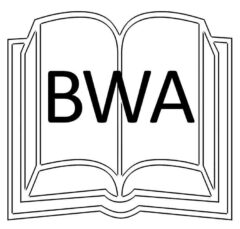
Hello all. Thank you for reading this latest promotional essay for my book project entitled, The Engineers: A Western New York Basketball Story. Delaware Park was an in important hub for city basketball players over the years and many young men sharpened their games there. If you’re from Buffalo and have memories or thoughts on Delaware Park, please let me know here in the comments section. If you are from another city and had something similar to Delaware Park where you’re from, please me know what you think as well. Best regards and Yours in Good Sports!